Effective Java (Java Series)
Are you looking for a deeper understanding of the Java™ programming language so that you can write code that is clearer, more correct, more robust, and more reusable? Look no further! Effective Java™, Second Edition, brings together seventy-eight indispensable programmer’s rules of thumb: working, best-practice solutions for the programming challenges you encounter every day.\ This highly anticipated new edition of the classic, Jolt Award-winning work has been thoroughly updated to cover Java...
Search in google:
Are you looking for a deeper understanding of the Java™ programming language so that you can write code that is clearer, more correct, more robust, and more reusable? Look no further! Effective Java™, Second Edition, brings together seventy-eight indispensable programmer’s rules of thumb: working, best-practice solutions for the programming challenges you encounter every day.This highly anticipated new edition of the classic, Jolt Award-winning work has been thoroughly updated to cover Java SE 5 and Java SE 6 features introduced since the first edition. Bloch explores new design patterns and language idioms, showing you how to make the most of features ranging from generics to enums, annotations to autoboxing.Each chapter in the book consists of several “items” presented in the form of a short, standalone essay that provides specific advice, insight into Java platform subtleties, and outstanding code examples. The comprehensive descriptions and explanations for each item illuminate what to do, what not to do, and why.Highlights include: New coverage of generics, enums, annotations, autoboxing, the for-each loop, varargs, concurrency utilities, and much more Updated techniques and best practices on classic topics, including objects, classes, libraries, methods, and serialization How to avoid the traps and pitfalls of commonly misunderstood subtleties of the language Focus on the language and its most fundamental libraries: java.lang, java.util, and, to a lesser extent, java.util.concurrent and java.ioSimply put, Effective Java™, Second Edition, presents the most practical, authoritative guidelines available for writing efficient, well-designed programs. Booknews Having worked as a platform libraries architect for Java since 1996, Bloch shares with programmers what he has learned about what works, what does not, and how to use the language and its libraries to best effect. He presents 57 specific hints in sections on creating and destroying objects, methods common to all objects, classes and interfaces, substitutes for C constructs, methods, general programming, exceptions, threads, and serialization. Annotation c. Book News, Inc., Portland, OR (booknews.com)
Chapter 6: Methods\ This chapter discusses several aspects of method design: how to treat parameters and return values, how to design method signatures, and how to document methods. Much of the material in this chapter applies to constructors as well as to methods. Like Chapter 5, this chapter focuses on usability, robustness, and flexibility.\ Item 23: Check parameters for validity\ Most methods and constructors have some restrictions on what values may be passed into their parameters. For example, it is not uncommon that index values must be nonnegative and object references must be non-null. You should clearly document all such restrictions and enforce them with checks at the beginning of the method body. This is a special case of the general principle, and you should attempt to detect errors as soon as possible after they occur. Failing to do so makes it less likely that an error will be detected and makes it harder to determine the source of an error once it has been detected.\ If an invalid parameter value is passed to a method and the method checks its parameters before execution, it will fail quickly and cleanly with an appropriate exception. If the method fails to check its parameters, several things could happen. The method could fail with a confusing exception in the midst of processing. Worse, the method could return normally but silently compute the wrong result. Worst of all, the method could return normally but leave some object in a compromised state, causing an error at some unrelated point in the code at some undetermined time in the future.\ For public methods, use the Javadoc @throws tag to document the exception that will be thrown if a restriction on parameter values is violated (Item 44). Typically the exception will be IllegalArgumentException, IndexOutOfBoundsException, or NullPointerException (Item 42). Once you've documented the restrictions on a method's parameters and you've documented the exceptions that will be thrown if these restrictions are violated, it is a simple matter to enforce the restrictions. Here's a typical example:\ \ \ /**\ *Returns a BigInteger whose value is (this mod m).This method\ *differs from the remainder method in that it always returns\ *nonnegative BigInteger.\ *\ *@param m the modulus,which must be positive.\ *@return this mod m.\ *@throws ArithmeticException if m <= 0.\ */\ public BigInteger mod(BigInteger m){\ if (m.signum()<= 0)\ throw new ArithmeticException("Modulus not positive");\ ... // Do the computation\ }\ \ \ For an unexported method, you as the package author control the circumstances under which the method is called, so you can and should ensure that only valid parameter values are ever passed in. Therefore nonpublic methods should generally check their parameters using assertions rather than normal checks. If you are using a release of the platform that supports assertions (1.4 or later), you should use the assert construct; otherwise you should use a makeshift assertion mechanism.\ It is particularly important to check the validity of parameters that are not used by a method but are stored away for later use. For example, consider the static factory method on page 86, which takes an int array and returns a List view of the array. If a client of this method were to pass in null , the method would throw a NullPointerException because the method contains an explicit check. If the check had been omitted, the method would return a reference to a newly created List instance that would throw a NullPointerException as soon as a client attempted to use it. By that time, unfortunately, the origin of the List instance might be very difficult to determine, which could greatly complicate the task of debugging.\ Constructors represent a special case of the principle that you should check the validity of parameters that are to be stored away for later use. It is very important to check the validity of parameters to constructors to prevent the construction of an object that violates class invariants.\ There are exceptions to the rule that you should check a method's parameters before performing its computation. An important exception is the case in which the validity check would be expensive or impractical and the validity check is performed implicitly in the process of doing the computation. For example, consider a method that sorts a list of objects, such as Collections.sort(List). All of the objects in the list must be mutually comparable. In the process of sorting the list, every object in the list will be compared to some other object in the list. If the objects aren't mutually comparable, one of these comparisons will throw a ClassCastException, which is exactly what the sort method should do. Therefore there would be little point in checking ahead of time that the elements in the list were mutually comparable. Note, however, that indiscriminate application of this technique can result in a loss of failure atomicity (Item 46).\ Occasionally, a computation implicitly performs the required validity check on some parameter but throws the wrong exception if the check fails. That is to say, the exception that the computation would naturally throw as the result of an invalid parameter value does not match the exception that you have documented the method to throw. Under these circumstances, you should use the exception translation idiom described in Item 43 to translate the natural exception into the correct one.\ Do not infer from this item that arbitrary restrictions on parameters are a good thing. On the contrary, you should design methods to be as general as it is practical to make them. The fewer restrictions that you place on parameters, the better, assuming the method can do something reasonable with all of the parameter values that it accepts. Often, however, some restrictions are intrinsic to the abstraction being implemented.\ To summarize, each time you write a method or constructor, you should think about what restrictions exist on its parameters. You should document these restrictions and enforce them with explicit checks at the beginning of the method body. It is important to get into the habit of doing this; the modest work that it entails will be paid back with interest the first time a validity check fails.\ Item 24: Make defensive copies when needed\ One thing that makes the Java programming language such a pleasure to use is that it is a safe language. This means that in the absence of native methods it is immune to buffer overruns, array overruns, wild pointers, and other memory corruption errors that plague unsafe languages such as C and C++. In a safe language it is possible to write classes and to know with certainty that their invariants will remain true, no matter what happens in any other part of the system. This is not possible in languages that treat all of memory as one giant array.\ Even in a safe language, you aren't insulated from other classes without some effort on your part. You must program defensively with the assumption that clients of your class will do their best to destroy its invariants. This may actually be true if someone tries to break the security of your system, but more likely your class will have to cope with unexpected behavior resulting from honest mistakes on the part of the programmer using your API. Either way, it is worth taking the time to write classes that are robust in the face of ill-behaved clients.\ While it is impossible for another class to modify an object's internal state without some assistance from the object, it is surprisingly easy to provide such assistance without meaning to do so. For example, consider the following class, which purports to represent an immutable time period...
1 Introduction 12 Creating and Destroying Objects 53 Methods Common to All Objects 334 Classes and Interfaces 675 Generics 1096 Enums and Annotations 1477 Methods 1818 General Programming 2099 Exceptions 24110 Concurrency 25911 Serialization 289Appendix Items Corresponding to First Edition 317References 321Index 327
\ BooknewsHaving worked as a platform libraries architect for Java since 1996, Bloch shares with programmers what he has learned about what works, what does not, and how to use the language and its libraries to best effect. He presents 57 specific hints in sections on creating and destroying objects, methods common to all objects, classes and interfaces, substitutes for C constructs, methods, general programming, exceptions, threads, and serialization. Annotation c. Book News, Inc., Portland, OR (booknews.com)\ \
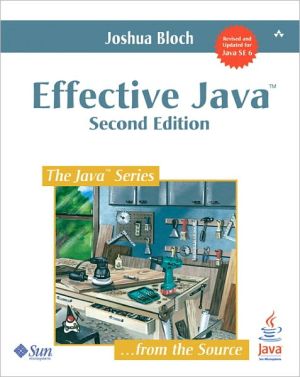
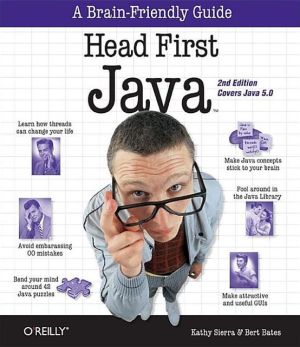
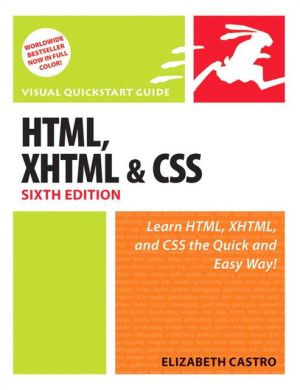
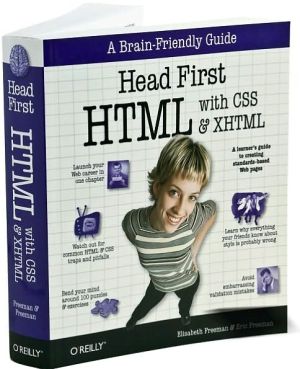
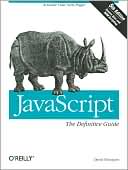

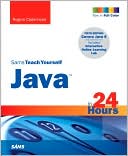
![Java How to Program: Early Objects Version [With CDROM] Java How to Program: Early Objects Version [With CDROM]](/application/data/covers/30/64/9780136053064.jpg)